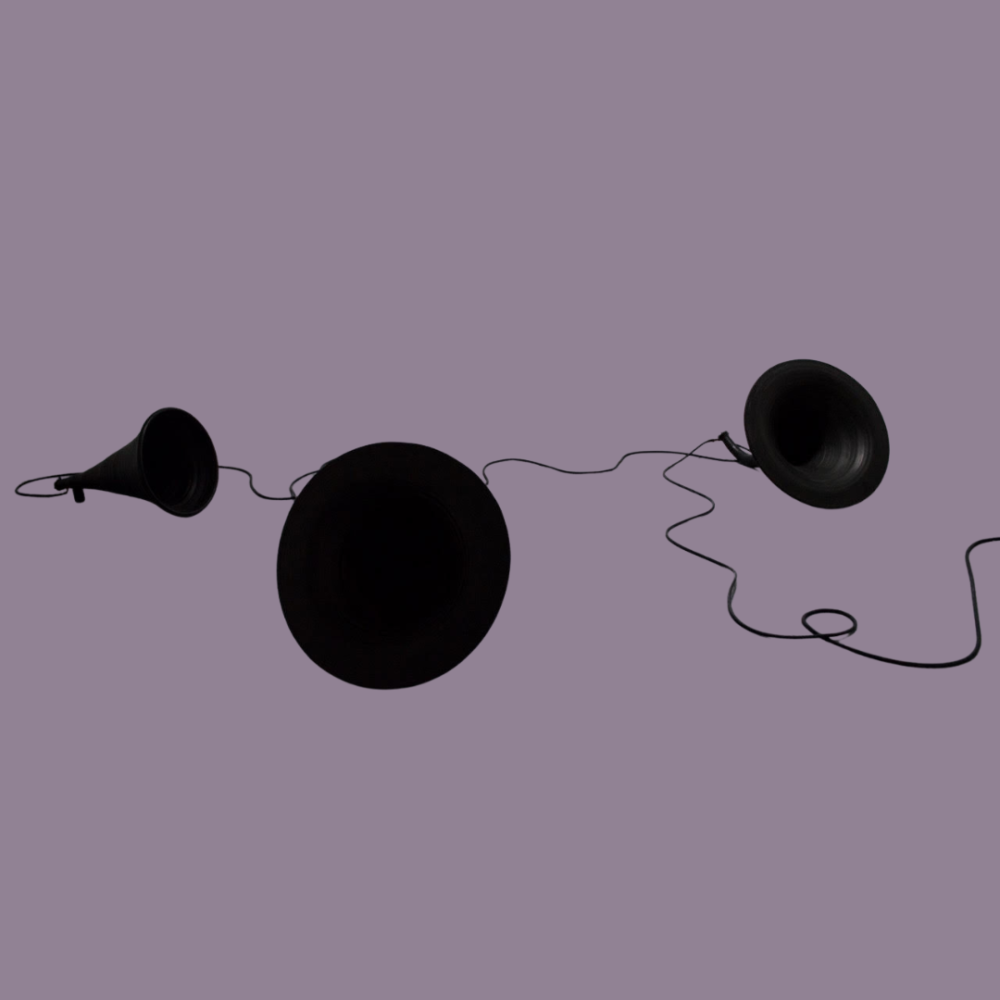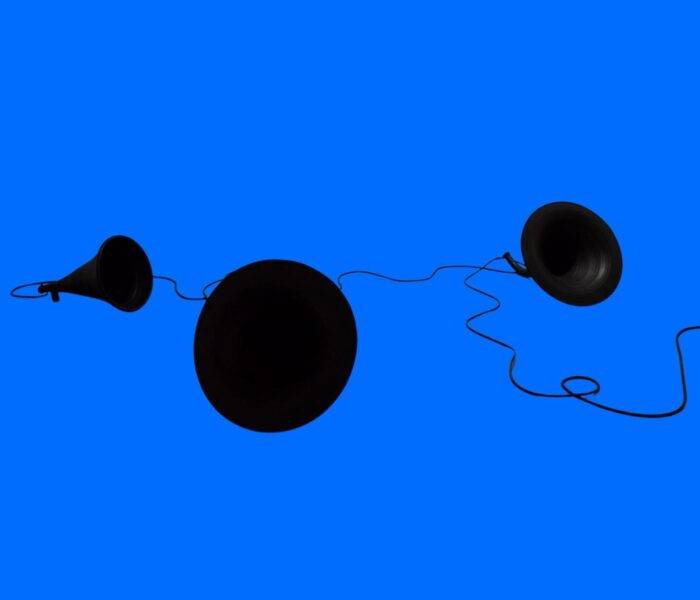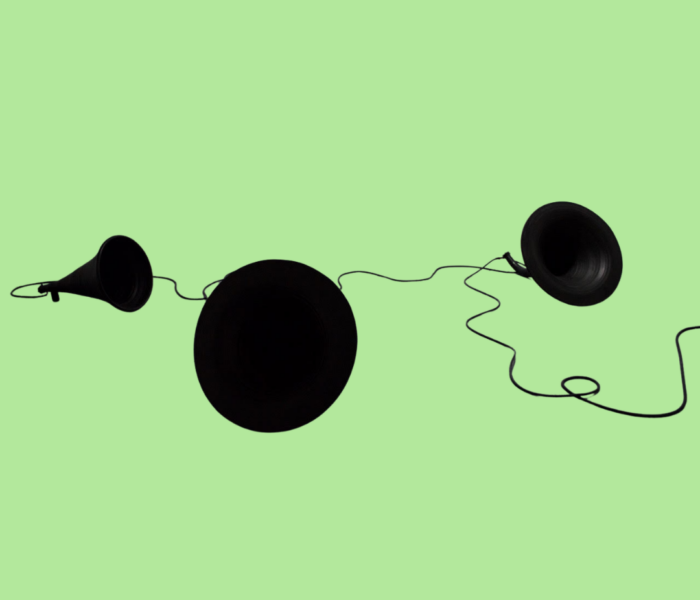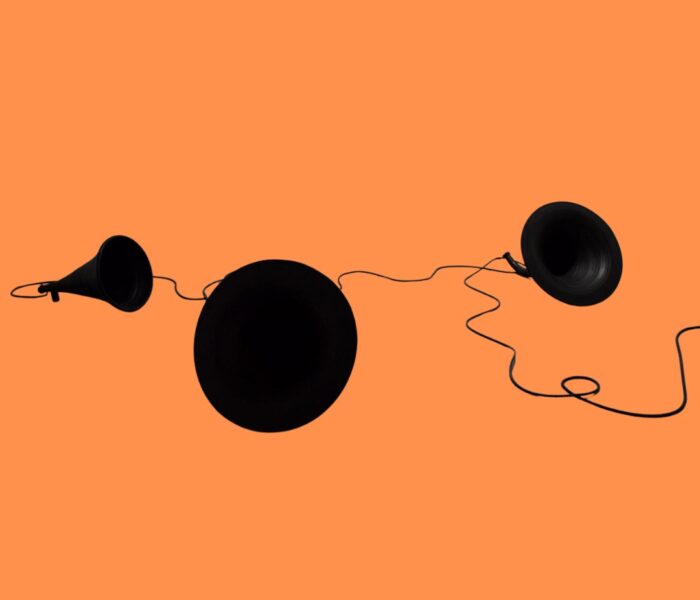Beaucoup de créations et de découvertes dans cette nouvelle playlist : Martin Matalon, Jessica Moss, Nicolas Worms, Edmund Finnis, Shao Wei Chou ou encore l’ensemble MG21. Mais aussi un hommage aux années 1960, avec trois grandes figures du monde sonore : Gyorgy Ligeti, dont nous célébrons le 100e anniversaire de sa naissance, Cathy Berberian, diva divine qui est un modèle pour toutes les voix et enfin Carla Bley, une des rares jazzwomen à avoir connu la célébrité comme compositrice. Donc continuons à explorer la planète musique. Une planète sans fin, sans bord, fluide.
La playlist de Anne Montaron
[Lì] : Sons, Contes et images de la flûtiste Shao-Wei Chou (Soond Label)
Petite merveille que cet album original de la flûtiste franco-taïwanaise Shao-Wei Chou qui associe en effet les sons (sons de la flûte, de la voix, et sons du dehors) à l’univers du conte, (certains mêlés à la musique quand d’autres ponctuent le livret de l’album) et les images (les photographies en noir et blanc de Yves-Vincent Davroux, qui rythment elles aussi le livret). Le rêve est omniprésent dans cet album polyglotte qui évolue tout autant autour des langues et des imaginaires de différentes cultures, qu’autour des dédoublements de la flûtiste.
La mosaïque sonore fait se rencontrer les univers de Luc Ferrari, Claire-Mélanie Sinnhuber, Rebecca Saunders, Klaus Lang, Colin Roche et Mu-Xuan Lin.
La flûtiste est rejointe par ses comparses du Trio 20°dans le Noir (Fanny Vicens & Lola Malique) et par le joueur de zheng Jing-Mu Kuo. La poésie est au rendez-vous, et attrape l’oreille dès le premier son !
En écoute gratuite sur Spotify et surtout à commander ici.
Traces, de Martin Matalon par l’Ensemble Sillages (Label Ame Son)
En musique, les amitiés tissées au long court entre des musiciens et un créateur génèrent souvent de bien belles choses. L’Ensemble Sillages a fait une longue route avec le compositeur franco-argentin Martin Matalon, et lui est fidèle une fois encore en éditant de nouvelles Traces pour instrument seul (violon, violoncelle, accordéon, piano, harpe, trombone) et électronique, superbement introduites par un livret du compositeur-organiste Thomas Lacôte.
On reconnaît d’une Trace à l’autre la poésie que le compositeur sait obtenir avec l’outil électronique : jeux de doubles magnifiquement servis par des interprètes mis en situation de jeu live, c’est-à-dire jouant au milieu de la diffusion électronique.
Un grand bravo aux solistes de l’Ensemble Sillages, qui nous donnent ainsi la possibilité de voyager avec poésie et délicatesse dans le journal intime du compositeur Martin Matalon, lui qui considère ce cycle de Traces comme les pages toujours renouvelées d’un seul et même journal !
Chorus, avec l’Ensemble MG21 (Label Solstice)
L’ensemble MG21 n’en finit pas d’inventer et de chercher de nouvelles façons de croiser les chemins ! Avec l’album Chorus, l’orchestre à plectres (mandolines, mandoles, mandoloncelle, guitares et basse) nous montre que les cloisons entre les musiques sont parfois bien artificielles. Le fondateur de l’ensemble, Florentino Calvo, a imaginé tout un programme autour des musiques populaires telles que la pop ou le rock. Le souvenir de Brubeck, Hendrix et Piazzolla hante les musiques de Chorus, signées Claude Barthélémy, Fabien Cali, Tomas Bordalejo, Bruno Giner, Sylvain Kassap et Ricardo Sandoval, des compositeurs aux parcours très contrastés. Chorus est un album d’une grande originalité, qui sonne et qui donne envie de danser ! Rien de mieux que ce métissage musical pour fêter de façon joyeuse le quinzième anniversaire d’un ensemble tout feu tout flamme, si joliment engagé dans la création.
En écoute gratuite sur Spotify et surtout à commander ici.
La playlist de Guillaume Kosmicki
Cette playlist, une fois n’est pas coutume, s’ancre dans le passé. Elle nous plonge dans l’ambiance débridée de la décennie des années soixante, jusqu’aux portes des années soixante-dix, où tout un monde de musique novatrice s’ouvrait, mais aussi de remises en question sociétales et de combats révolutionnaires, inscrits dans une quête de liberté généralisée.
Requiem, Gyorgy Ligeti
En 1965, le compositeur hongrois György Ligeti (1923-2006), exilé depuis 1956 du côté ouest du rideau de fer, démontre par son Requiem que ses impressionnants édifices de « surfaces de timbres » peuvent aussi s’appliquer à la musique chorale. Beaucoup d’auditeurs découvrent cette œuvre, aussi terrifiante que fascinante, dans la scène mythique du film de Stanley Kubrick 2001 : l’Odyssée de l’Espace (1968), où un fragile groupe d’australopithèques, perdu dans l’immensité du monde, fait face à l’apparition d’un mégalithe extra-terrestre. Ligeti révolutionne la musique par ses masses sonores, reposant sur des sons sans cesse mouvants, alors que la structure générale donne l’impression d’une grande forme unitaire relativement statique. Mon interprétation conseillée au disque : le Kammerchor de Stuttgart dirigé par Frieder Bernius (avec en prime Lux Aeterna et les somptueux arrangements chorals de Ravel, Debussy et Mahler par Clytus Gottwald).
Stripsody, Cathy Berberian
Cathy Berberian ose tout ! Son œuvre Stripsody (1966) associe partition graphique, collage débridé, théâtre musical et passion pour la bande-dessinée (les comic trips, qui donnent leur forme à l’œuvre) avec un sérieux brin de folie. Il faut dire que cette chanteuse à la voix exceptionnelle (1925-1983), amie d’Umberto Eco, initiatrice de la nuova vocalità, a été depuis longtemps choisie par les compositeurs de l’avant-garde comme l’interprète privilégiée de leurs recherches les plus expérimentales, John Cage, Luigi Nono, Luciano Berio (avec qui elle fut mariée, et dont elle donne une interprétation inoubliable de la Sequenza III, qui lui est dédiée), etc. Des extraits de Beatles ou de la Traviata, des onomatopées imagées, des bruitages, des interjections, des imitations d’animaux, des sons triviaux, des chuchotements, murmures, paroles, chants, grognements, cris… La voix fantastique et la personnalité artistique de Berberian servent parfaitement sa composition.
Escalator over the Hill, Carla Bley
Quel meilleur autre exemple de liberté musicale que l’opéra Escalator over the Hill de Carla Bley (née en 1936), sorti en triple album en 1971 (JCOA) ? En 1968, la jazzwoman découvre Sergent Pepper’s Lonely Heart Club Band des Beatles. Lassée des longues sessions d’improvisation du free jazz, elle commande un livret au poète Paul Haines, et travaille trois ans sur ce projet bigarré, protéiforme, inclassable, mêlant des rengaines populaires, des valses, des hymnes religieuses, des envolées virtuoses, des masses bruitistes, des passages free jazz, des arrangements big band, des chansons pop, une énergie rock, du blues, de la country, des paysages sonores électroniques, du chant d’opéra, l’influence de traditions extra-occidentales comme la musique indienne et les musiques latino-américaines, etc. Cette fresque impressionnante bénéficie d’une distribution époustouflante qui réunit cinquante-trois chanteurs et instrumentistes, dont Paul Motian, Charlie Haden, Don Cherry, John McLaughlin, Jack Bruce, Linda Ronstadt, Roswell Rudd, Jeanne lee, Gato Barbieri et Michael Mantler. De plus, cette synthèse éclectique est traversée par l’humour grinçant et ironique de Carla Bley, marquée par le travail de Kurt Weill, mais aussi d’Erik Satie, Charles Ives et Nino Rota.
La playlist de Sandrine Maricot Despretz
Galaxy Heart de Jessica Moss, album digital paru le 22 octobre 2022,
C’est au détour du reportage de notre confrère Bastien Gallet à la Cave 12 à Genève que j’ai découvert cette compositrice et violoncelliste canadienne, qui chante et joue tout aussi bien de la guitare électrique.
Galaxy heart est un album de la solitude écrit en 2021 qui frappe, résonne, oscille d’une intensité électrique autant que par ses voix fragiles et ces longues vibrations au violon et violoncelle. Tonalités des vastes plaines, plaintes retenues, voix rock et expérimentations sonores percussives et latentes, entre mélancolie et énergie rageuse, les morceaux s’enchaînent et nous enchaînent. De la passion contenue et beaucoup de précision. Ne rater pas le titre éponyme de l’album, “Galaxy Heart” et laisser dériver “Undirected” puis “Opened Ending”.
The Center is everywhere, album du Mancheter Collective, paru en juin 2021 (Bedroom Collective)
Un autre coup de coeur que cet ensemble de Manchester (UK) et leur premier album né aussi au cœur de cette période pandémique, qui a tout bouleversé et qui pourtant semble déjà si lointaine. Les oeuvres de Phil Glass sont joués avec allant et finesse, The centre is everywhere du compositeur britannique Edmund Finnis, qui donne son titre à ce disque, est une création pour 12 cordes, délicate et profonde, mais c’est avec La nuit transfigurée d’Arnold Schönberg que l’on perçoit l’engagement et l’excellence de ces musicien.nes enthousiastes.



)



